
Article contents

Great decision to start a pension at 30 if you haven’t already. The best way is to open a personal pension – you get to pick a great pension provider, one that’s easy to use and has low fees, and the experts can handle everything for you. All you need to do is save regularly if you can (we’ve run through how much you’ll likely want to save below).
Looking to start a pension? Great! It’s the perfect time – if done right, you’ll be set up for a comfortable retirement, all thanks to starting a pension now.
Don’t worry if you haven’t got a pension at all yet, you’re still young(ish). The important thing is building up your pension from now on, not how much you’ve already saved. Although of course having a bit already in your pension pot helps.
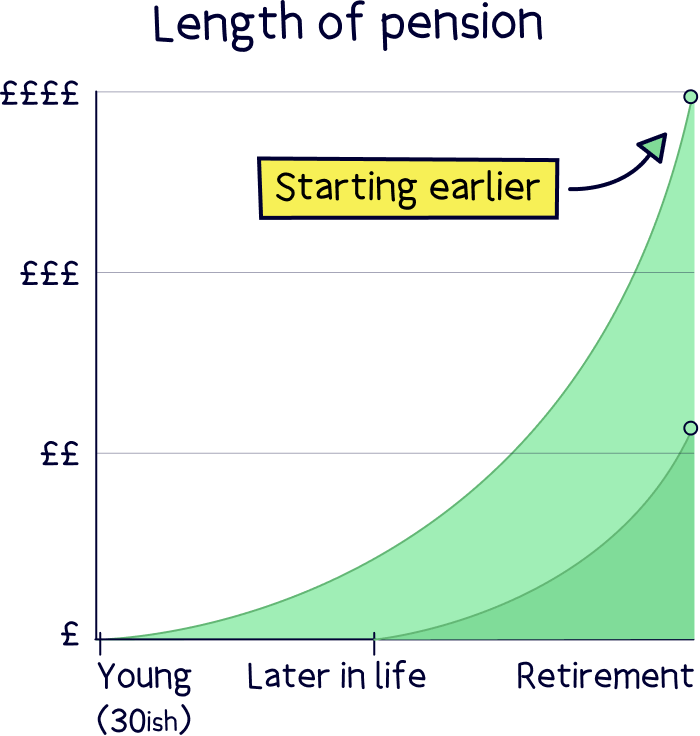
We’re going to run through how best to start a pension, and how much you need to save each month at 30 to build the comfortable retirement you deserve.
If you’re just here for the quick answer, your best option is to open a personal pension (alongside a pension from your work if they offer you one). With a personal pension, you’ll get a massive 25% bonus from the Government on everything you pay in (free money!).
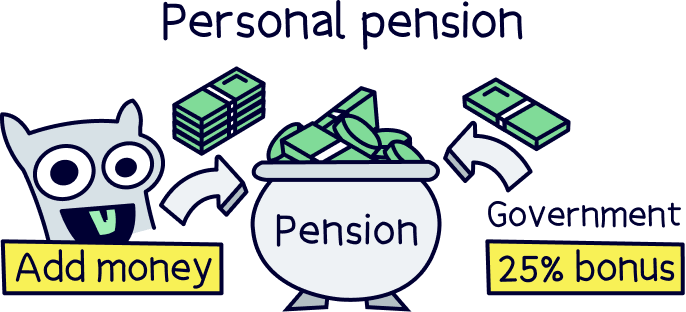
Here’s the best options:
PensionBee is our top rated provider, it’s easy to use and low cost – plus you’ll get £50 added to your pension when you open an account.
Get £50 added to your pension



PensionBee is our recommended provider – they’ve thought of everything.
Their 5 star rated app (and website) makes it easy to set up and use. You can open a brand new pension, or transfer your existing pensions across (they’ll handle all the paperwork).
Simply pick from an easy to understand range of pension plans, and that’s it, the experts manage everything from there.
It’s low cost, with one simple annual fee. The customer service is excellent, and you’ll get a dedicated account manager for any questions you might have.

And, when the time comes to retire, withdrawing from your pension is easy too.
You can also use them if you're self-employed or a company director.
Great app



A great and easy to use pension. Add money from your bank or combine old pensions into one, (they’ll find lost pensions too).
The customer service is excellent, with support based in the UK.

Beach is an easy to use pension app (and easy to set up), where you just add money and the experts handle everything. It’s all managed on your phone with a great app, and you can see your total pension pot whenever you like.
If you’ve got lost or old pensions, Beach can also find them and move them over too, so you can keep all your retirement savings in one place, and never have to worry about losing them in future.
You’ll get an automatic 25% bonus on the money you add to your pension pot from your bank account (tax relief from the government), which refunds 20% tax on your income, and if you pay 40% or 45% tax, you’ll typically be able to claim the extra back too.
The pension plan (investments) are managed by experts, who are the largest investment company in the world (BlackRock). And they consider things like reducing climate change, meaning your savings could make the world a little better in future too.
You can also save and invest alongside your pension with an easy access pot (access money in around a week), designed for general savings, with the investments managed sensibly by experts too. And money made can be tax-free within an ISA.
Fees: a simple annual fee of up to 0.73% (minimum £3.99 per month).
Minimum deposit: £25
Customer service: excellent
Pros:
Cons:
PensionBee is our top rated provider, it’s easy to use and low cost – plus you’ll get £50 added to your pension when you open an account.
If you're a bit unsure about pensions and would prefer to speak to an expert, check out Unbiased¹ – it's a free service to find pension experts (financial advisors) in your local area.



Unbiased is a great online service to help you find expert financial advisors who can help with your pension.
It’s very popular, with over 10 million customers, and pretty much the go-to-place to find pension advisors local to you.
All advisors are fully vetted, qualified and have years of experience.
You’ll be able to chat on the phone, video call, or visit in person (depending on the advisor).

It’s free to use the service, you’ll pay the advisor directly if you choose to use them (fees vary per advisor and service you’d like).
PensionBee is our top rated provider, it’s easy to use and low cost – plus you’ll get £50 added to your pension when you open an account.
Not at all! There’s still plenty of time to build up a nice big pension pot, all ready to give you a comfortable retirement.
Everyone is unique, and so is their pension pot – whether you’ve started at 18, or 30, it doesn’t matter. The important thing is to start saving regularly (ideally monthly) from now on.
If you start later than 30, e.g. waiting until you’re 40 or even starting a pension at 50, you’ll find it much more difficult to save as much as you could if you start now, even if you save a bit more per month! That’s because of something called compound interest…
Compound interest is where the money you make (from investments within your pension), begin to make money too. And this snowballs over and over, year and year, turning small amounts into very large amounts over long periods of time.
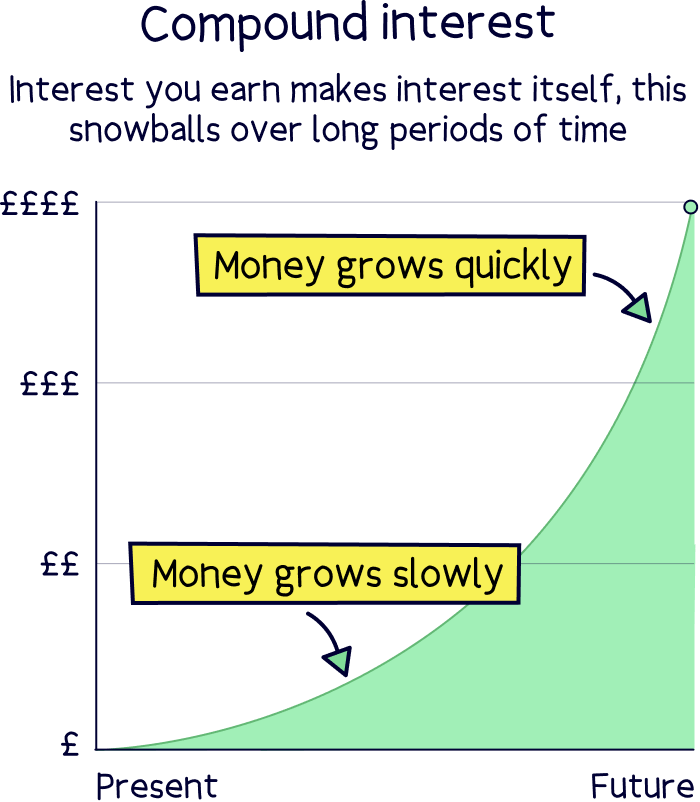
So, the longer you’re able to save for, before you retire, the more time compound interest has to work.
Now, don’t panic, but it’s obviously not ideal to have nothing in your pension at 30, but it’s not the end of the world. As we’ve mentioned, there’s plenty of time to save, as long as you start a pension now, and consistently pay into it.
Did you know the average pension pot at 30 is £9,300? That’s not the recommended pension pot – that’s different for everybody, there’s no general figure at 30 (although an old rule old thumb is you should have your current salary in your pension pot by 30).
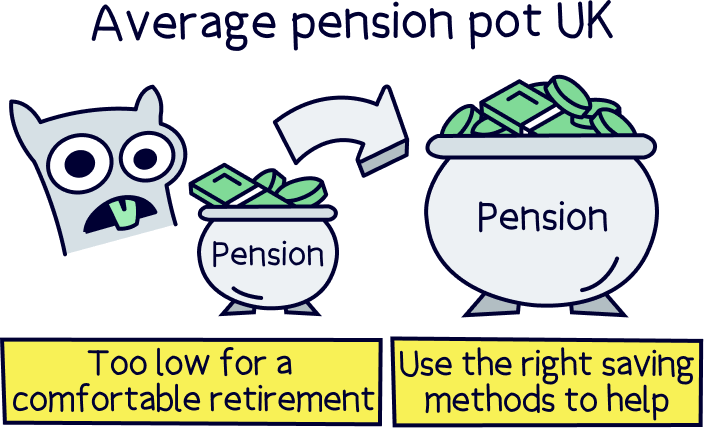
We’re written lots about it in our guide to how much you should have in your pension at 30, but let’s run through it here too so you can get yourself on the right track to a decent pension.
First, let’s run through a few essentials, the State Pension, and the Retirement Living Standards, and after, use these to help you determine how much you’ll need to start saving per month to get the retirement you’d like.
The State Pension is the pension you might get from the Government when you reach State Pension age – currently 66, but expected to rise to 68 in future.
It’s not much. It’s currently £230.25 per week (which is £11,973 per year), and you’ll likely struggle to live off just this (it's a lot less than minimum wage).
You’ll qualify for the full amount if you make 35 years National Insurance contributions, and get a smaller amount if you’ve made at least 10 years worth.
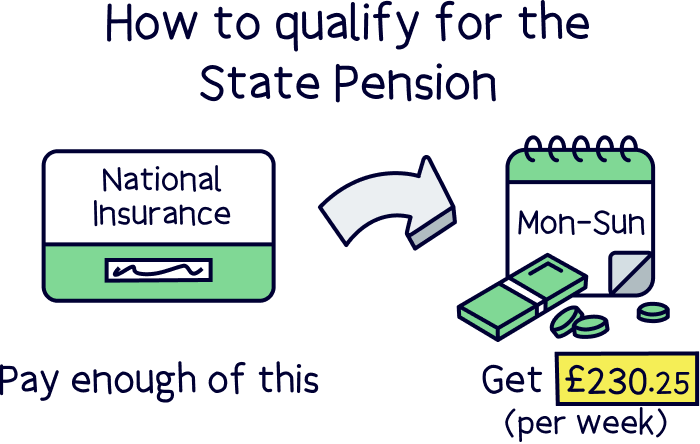
It’s a great option to provide the base level retirement income, and then use your own pension to boost your retirement income further (we’ll cover that below).
There’s 3 retirement income levels (minimum, moderate and maximum), put together by the Pensions and Lifetime Savings Association, called the Retirement Living Standards.
You can use these to work out how much income you’d like in retirement, and therefore how much retirement savings you’ll need in your pension pot, and therefore how much you need to save per month from now on to achieve it.
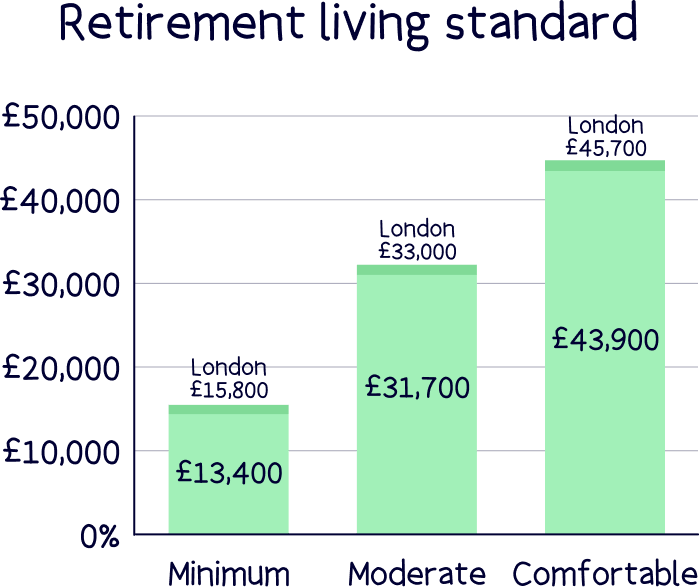
This covers all the basics in life, such as food, and clothes. You won’t be able to afford to run a car, and there’s a small amount for a week’s holiday (in the UK). It’s £13,400 per year for one person, and £21,600 for a couple.
You’ll have a bit more for the basics and a bit left over for small luxuries. You can afford to run a small car, and holiday in Europe for 2 weeks per year. It’s £31,700 per year for one person, and £43,900 for a couple.
You’ll have more freedom and financial security, with more for the essentials. You can drive a 3 year old car, and have a 2 week holiday abroad each year. It’s £43,900 per year for one person, and £60,600 for a couple.
All making sense so far?
So, you’ll need a rough estimation of how much you think you might like as an income when you retire, and then you can use that to estimate how big your pension pot needs to be.
A word of warning, they’re pretty hefty pension pot figures – But don’t panic! We’ll show you how your pension pot grows over time, and how to save to make the most of lots of free cash that’s added to your pension pot too.
We’re just letting you know how much you’ll likely need in your pension pot – you don’t need to save the whole amount yourself (just some of it)...
The great thing about pensions is they typically grow very large over time (that’s why 30 is a great age to start), and there’s lots of free cash to boost your pension pot too.
Here’s how much you’ll need for each Retirement Living Standard (level of income) by the time you retire. Either starting a pension from now, or if you’ve already got the average pension pot of £9,300.
Let’s run through these numbers.
If you’ve got no pension yet, and you want the minimum retirement income in the future (which will be higher than it is now), you’ll need a pension pot of £214,004 in addition to receiving the State Pension.
And to build up a pension pot that size, you’ll need total monthly contributions of £170. If you’ve already got the average pension pot of £9,300, you’ll need to make monthly contributions of £120.
And if you want a comfortable retirement, it's considerably more. A whopping £2,121,128 by the time you retire. Which means you'll need to save £1,610 now from the age of 30. This seems high now, but in the future, the price of things will get more expensive each year, so at the time it won't seem as much (although it's still huge).
The good news is that your total monthly pension contributions can have lots of free cash! Let’s run through how to build up your pension pot, and pocket that free cash.
You’ve got 2 options to start building your pension pot (and we recommend using both if you can), a workplace pension (set up by your employer), and a personal pension (set up by you).
A workplace pension is a pension set up by your employer (if you’re employed), and your pension contributions will be taken directly out of your salary each month (before you pay tax). It’s often called auto-enrolment.
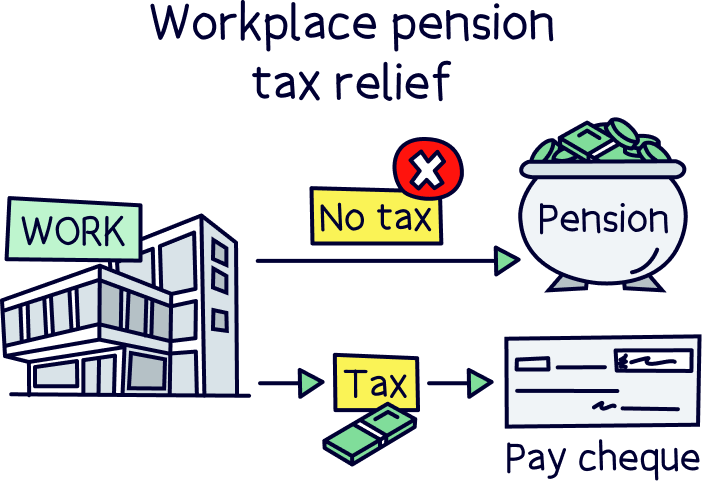
If you pay in 5% on your salary each year, your employer will have to pay at least 3% in too. It’s like a free pay rise!
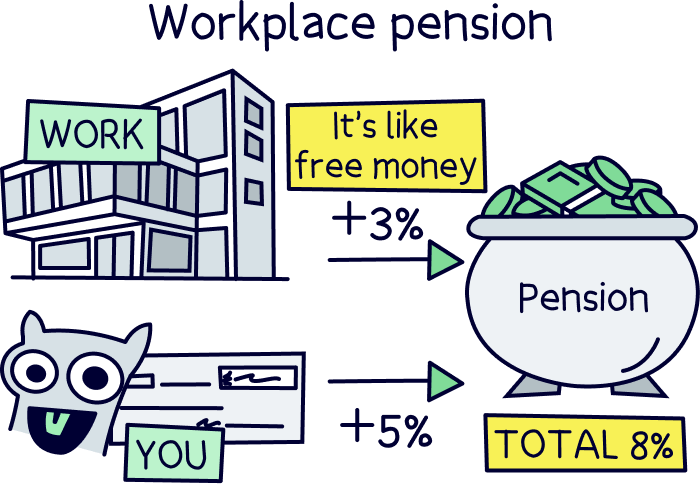
And sometimes, if you’ve got a really nice employer, they’ll match your contributions further (up to a point), so if you pay in say 10%, they’ll also pay in 10%, so you get even more free money.
We recommend paying at least 5% into your workplace pension scheme, to get the free 3%, and then if your employer does match higher contributions – pay in as much as they’ll match!
After that, and for saving more that the 5%, it’s often a good idea to start paying into a personal pension…
A personal pension is a pension set up by you, so instead of your employer picking which pension you have to use, you get to choose which pension provider (pension company) you use.
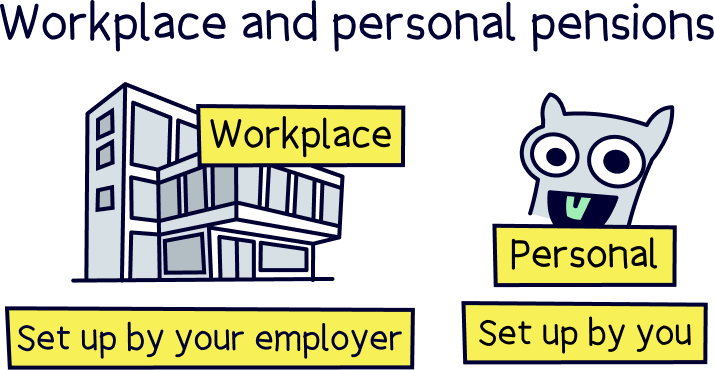
That means you can pick one that’s easy to use, has low fees and a great track record of investing (such as PensionBee¹ for all of those reasons). And here’s all the best personal pensions for you to compare.
Sometimes a workplace pension can be a bit like being on a bad mobile phone contract – one will not many minutes or data, but pretty expensive, and you’re not able to switch deals. With a personal pension, you can choose the best contract for you, and even switch deals whenever you like.
The great thing is you also get all the great tax-free benefits as a workplace pension – every time you add money, you’ll automatically get a 25% bonus from the Government, paid straight into your pension pot. This is to refund the tax you’d already paid on your income, called tax relief.
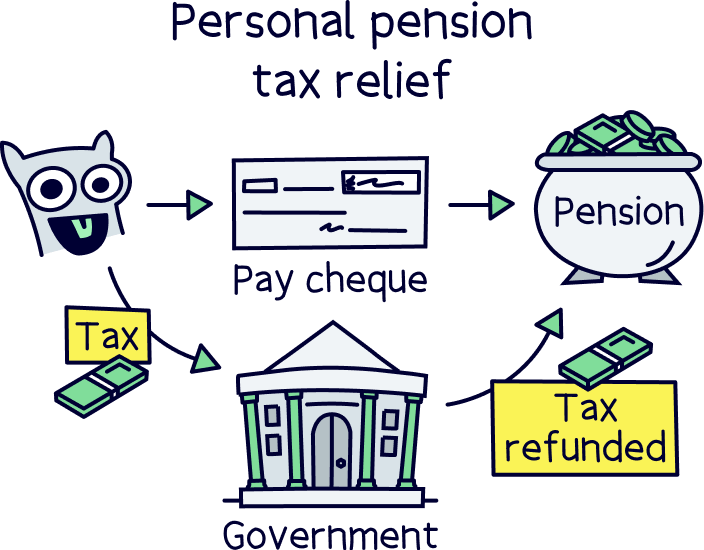
If you earn over £50,270 per year, and pay higher rate (40%) or additional rate (45%) tax, you can also claim some of this back too (done on a Self Assessment tax return).
Your money grows tax-free too (so it can grow even more over time, and there’s no paperwork to deal with).
Plus, you can move over any old pensions you might have too (e.g. from old jobs), which is called consolidating your pension. This means you’ll never lose them in future, and you could potentially save money (with lower fees), and get better investment growth in future.
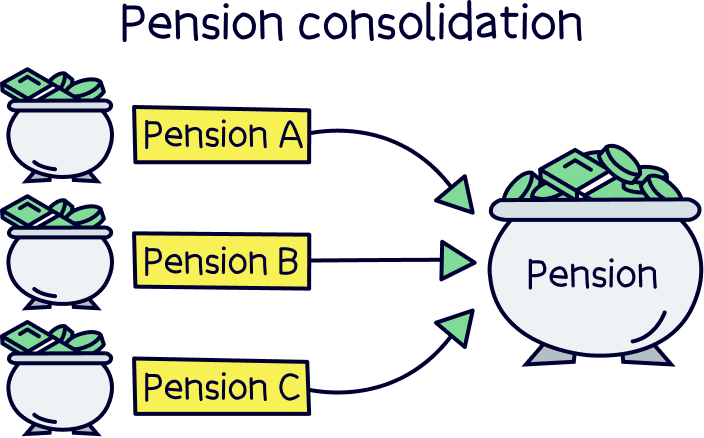
With both types of pensions (both are the 2 main types of private pensions, meaning a pension in your name rather than the State Pension), your money will be locked away until you’re 55 (57 from 2028), but when it does come to withdraw it, 25% will be tax-free. The remaining 75% will be eligible for Income Tax (the same as your salary now), so the amount you pay will depend on your income at the time.
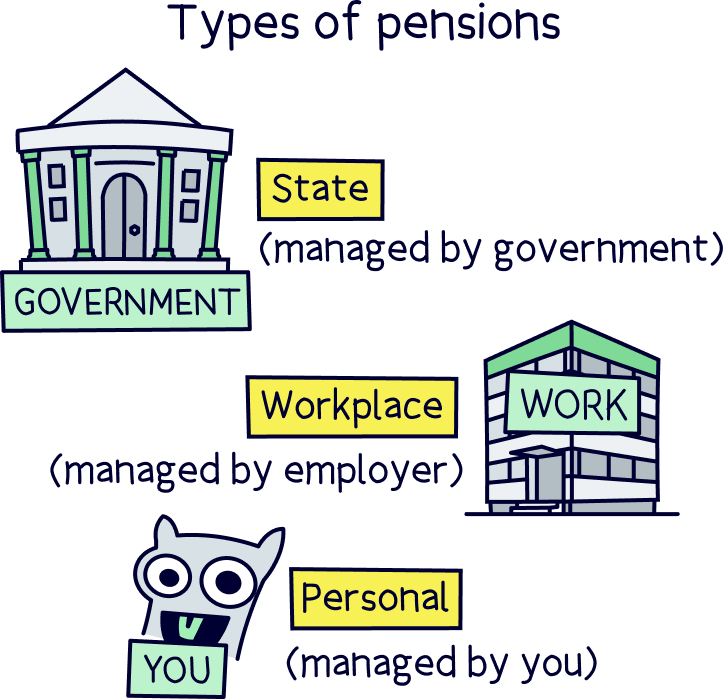
Note: if you’re self-employed, a personal pension is your only option (but a great one). Here’s where to learn more about self-employed pensions.
Pensions aren’t as complicated as you might think – these days they’re really simple.
If you’re all sorted with your workplace pension, it’s time to set up a personal pension!
All you need to do is first find the pension provider you like. Our top pick is PensionBee¹, it’s easy to use, has low fees and a great record of investing. There’s also Beach¹, you can save within a pension and an ISA (for general savings) at the same time. Here’s all the best pension providers.
Then, pick from a few simple pension plan options (where your money is invested), all suited to long-term growth, and managed sensibly by experts – so there’s nothing for you to do, and you don’t need to know anything about investing, just leave it to the experts.
And then simply add your money, ideally monthly. Keep paying into it and it should grow nicely over time, all ready for that comfortable retirement you deserve.
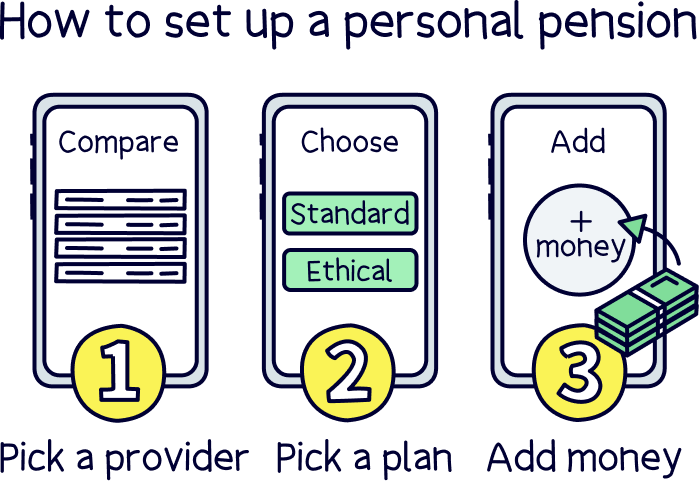
It’s a good idea to pay in as much as you comfortably can (without overstretching yourself), so your pension pot can grow bigger, and you can benefit from all the free cash (25% bonus), building your pension pot even more.
A self-invested personal pension, or SIPP, is a type of personal pension where instead of the experts handling things (e.g. growing your money over time), you decide which investments you want to make.
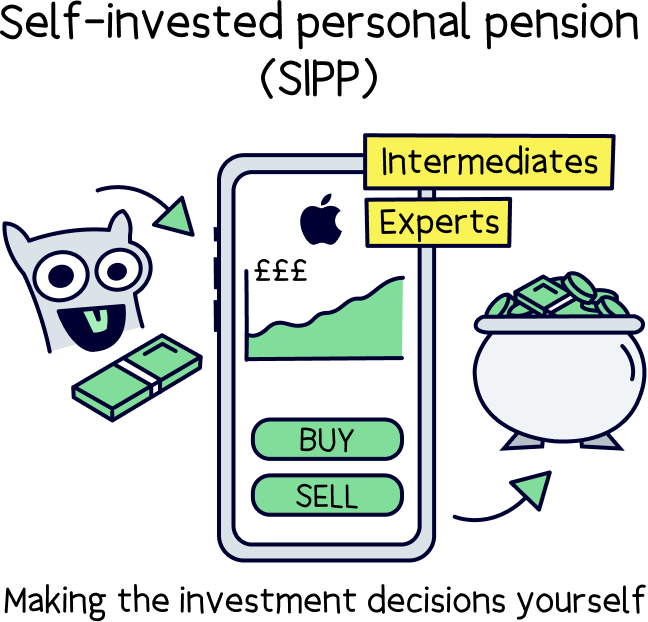
So, you can choose to buy stocks and shares (where you own a small part of a company, a share of the company), or investment funds, which are groups of lots of different investments pooled together into a single investment, and managed by an expert. Investment funds designed for pensions are often called pension funds.
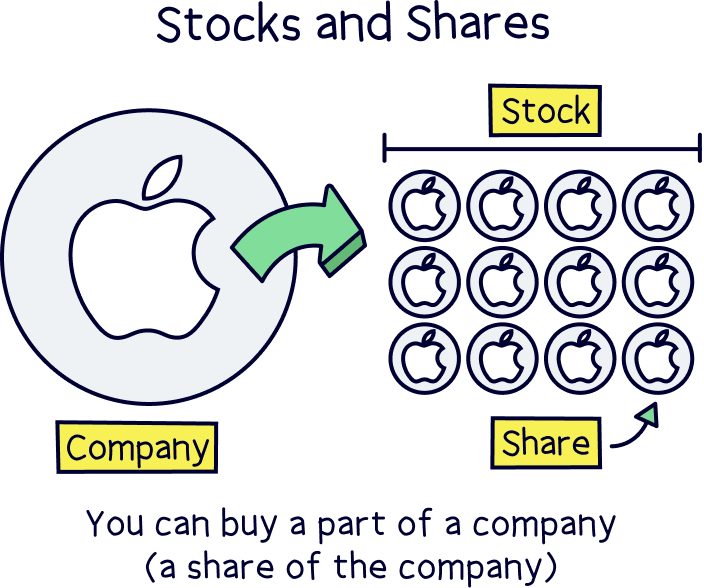
You’ll still get all the great benefits of a personal pension (e.g. the 25% government bonus). And your money will grow tax-free too.
These are only recommended for experienced investors, and you can learn more and view all the best options with our best SIPP providers.
Note: you’ll also find modern pension providers are called SIPPs too – even though the experts manage things. That’s because you’re picking from a very limited range of investment options (the pension plans).
Yes, it’s safe to use a personal pension. In the UK, pension providers need to be authorised by the Financial Conduct Authority (FCA). They’re the people who make sure financial companies are looking after their customers and their money.
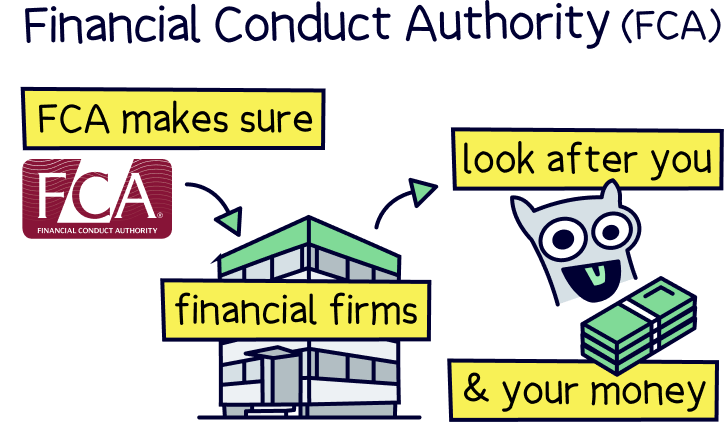
You can check if a pension provider is authorised by the FCA by checking the FCA register.
That means your money is also protected by the Financial Services Compensation Scheme (FSCS). Which means if your personal pension provider were to go out of business, you could get up to £85,000 in compensation.
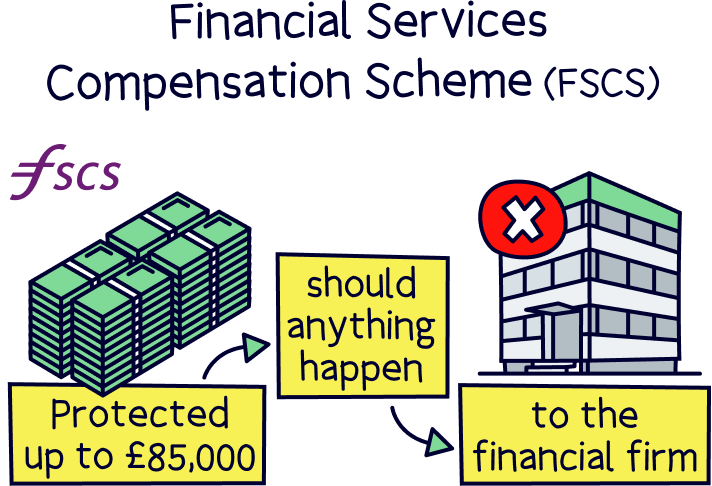
There’s more protection too – your money is actually in the investments themselves, which are held with large investment companies and banks, and held all in your name, and can only be returned to you.
However, this doesn’t mean your investments can’t go down in value, and they may do. Investing for the long-term (such as with a pension) can mean there are ups and downs along the way, but over time typically grow (very) large over time, and build a nice big pension pot ready for retirement.
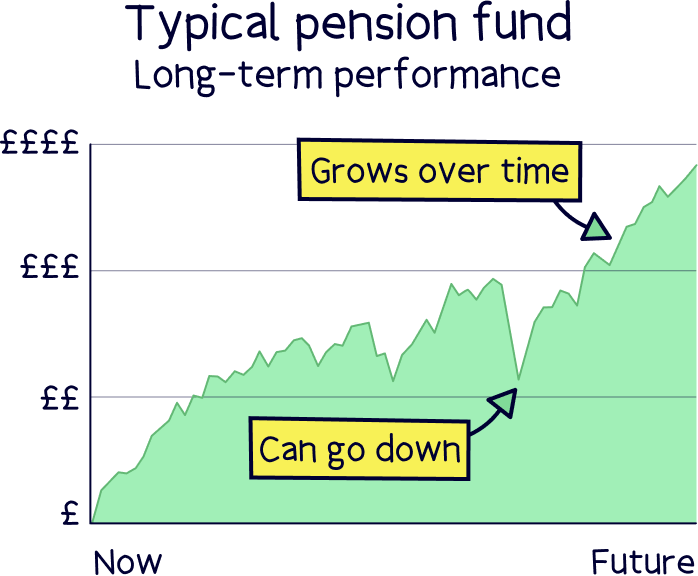
That’s it for starting a pension at 30. Easier than you thought? We hope so!
Don’t feel bad if you haven’t started a pension yet, 30 is still young, and there’s loads of time for your pension to grow – the important thing is start today, and start saving monthly if you can.
Ideally put away as much as you can comfortably afford, but here’s how much you’ll likely need to save per month to build a pension pot for the retirement income you’d like…
(These totals include all the free cash you get, either from your employer, or the Government with a personal pension, so you can save quite a bit less than the total each month, with the free cash making up the difference).
For the recommended minimum retirement income of £13,400 per year, it’s recommended you save £170 per month (in total).
For a retirement income of £31,700 (moderate retirement), you’ll need to save £1,030 per month in total.
For a comfortable retirement income of £43,900 per year, you’ll need to save £1,610 per month.
And that’s if you include receiving the State Pension. If you don’t think you will, you’ll need a bigger pension pot. We’re also presuming you will retire at 68 (the standard age).
If you have got a pension pot already, you can save a bit less each month, but as you’re still young, it won’t make too much difference – still try and save as much as possible.
The best way to get started is to make the most of your workplace pension if you haven’t already. Sign up and get the 3% free cash (your employer contributions)...
After that, set yourself up with a personal pension, you’ll get to pick a great pension provider, and benefit from the 25% bonus on all your pension contributions.
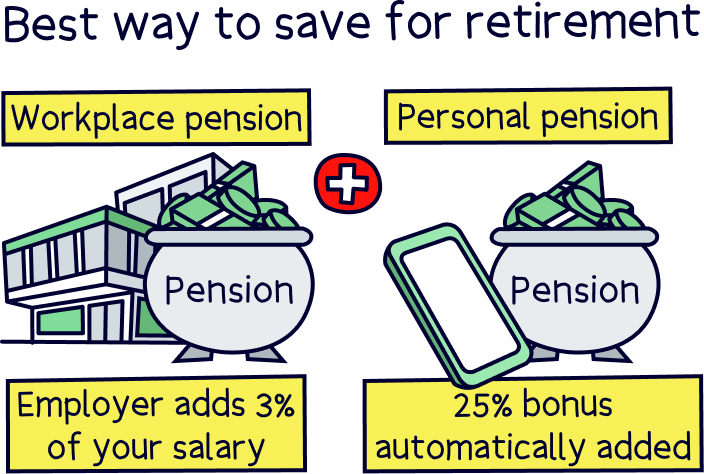
Our top recommendation is PensionBee¹, it’s easy to use, has low fees and a great track record of investing (plus, you’ll get £50 added to your pension when you register through Nuts About Money). There’s also Beach¹ where you’re able to save in a pension alongside things like a tax-free ISA too. Or, check out all your options with our best pension providers.
And that’s it! All the best saving for your future.
PensionBee is our top rated provider, it’s easy to use and low cost – plus you’ll get £50 added to your pension when you open an account.
We’d love to hear from you, and it will help others too.
PensionBee is our top rated provider, it’s easy to use and low cost – plus you’ll get £50 added to your pension when you open an account.